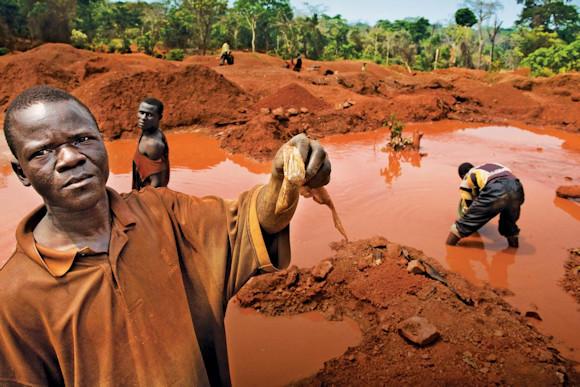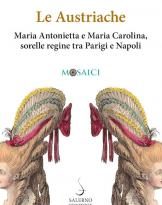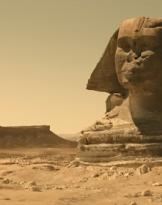The title of the article could leave a moment banned: what do mobile phones with the war in the Congo center? And, what is that word in the middle: "Coltan"?
I must say that I too was not very informed about the matter. For me it all started with the reading of the book by Noam Chomsky and Andre Vltchek entitled "Western Terrorism". The book is a journey through the world seen through the eyes of Chomsky and Vltchek.
And what a trip!
The term "Coltan" already appears on the first pages. I stress it and I plan to go to deepen at the end of the chapter, but then I stop, I go back, I read ... and I do it now.
I enter some keywords on my browser: coltan, war, congo.
The first thing I find is a "The Guardian" article that says that President Trump wants to temporarily suspend a law (Dodd-Frank financial reform) that in effect prevents US multinationals from trading in minerals from the Congo and using them for the production of consumer goods. The article is from February 2017.
I continue my research and I come across another article from the 2017 that appeared in Newsweek. This discusses the possible consequences of the suspension of the Dodd-Frank reform, which came into force during the Obama presidency.
I continue the search. In an article by 15 2017 appeared in Corriere della Sera entitled: "Congo, the hell of Coltan and the labor of despair" the author Andrea Nicastro begins with some news on the Coltan and also I think it's time to learn more.
What, then, is the Coltan? It is the abbreviation for Coltan with which we refer to a rock composed mainly of two minerals, the Columbite - (Fe, Mn) Nb2O6 - and the Tantalite - (Fe, Mn) Ta2O6. Tantalum-rich Tantalite Columbite-Tantalite is highly sought after in the electronics industry as it is used for the production of electronic components.
But where is the Columbite-Tantalite?
To understand more, let's take a look at the US Geological Survey's data:

As can be seen the major producers are Congo and Rwanda, it will be a coincidence that these two states can not find peace?
Let's go on with the research trying to find answers to some other questions:
- What are the countries that import Coltan?
- What are the companies that use it?
- What is the "world policeman" doing to stop the smartphone war?
In the 2011 a researcher at MIT published a study entitled "Coltan, the Congo and your phone", a representative title of the situation.
According to the study, the main world groups that managed the foundries for the extraction of Tantalum were three:
- Cabot Corporation (USA);
- HC Starck (Germany);
- Ningxia Corporation (China).
From the same paper we learn that the main producers of capacitors that are then used in electronic devices were:
- AVX Corporation (Kyocera Group, Japan);
- Kemet "the capacitance company" (USA);
- NEC (Japan);
- Samsung (South Korea);
- Vishay (USA).
From the 2011 the situation may have changed slightly but the substance remains.
Armed groups of different origins control the proceeds of (illegal) raw material traffic.
Among the armed groups indicated in the study were elements of:
- Lord's Resistance Army (LRA);
- Uganda People's Defense Forces (UPDF);
- Rwandan Patriotic Army (RPA);
- Forces démocratiques de libération du Rwanda (FDLR);
- Armée Patriotique Rwandaise (APR);
- Armée Nationale Congolaise (ANC);
- Forces armées de la République démocratique du Congo (FARDC).
While there are rules that require companies to verify the origin of raw materials (prohibiting the use of materials from territories at war), on the other side of the barricade there are billions of consumers of technologies that can not do without of the latest smartphone model.
In the middle, producers make their interests.
Those who do not do it are the "non-people" that are so often mentioned in the book by Noam Chomsky and Andre Vltchek that I mentioned at the beginning of the article.
More than 5 million victims caused by the violence of war between armed groups that control the territory of the Democratic Republic of the Congo and the borders.
Recently the Venezuelan government has begun to consider the possibility of extracting the Coltan from its Amazonian fields, promising respect for the indigenous peoples. Will it be a new Congo? We'll see it in the next few years ...
Meanwhile, in our little one can we do something?
Yes. When we decide to change the smartphone, let's do it because we really need it and not to chase a fashion or to satisfy the whim of our son.
Alessandro Rugolo
To learn more:
- https://www.theguardian.com/us-news/2017/feb/08/trump-administration-ord...
- http://www.newsweek.com/congo-conflict-minerals-dodd-frank-trump-623235
- http://www.corriere.it/esteri/17_aprile_13/inferno-coltan-2adccda8-2218-...
- http://espresso.repubblica.it/internazionale/2015/02/27/news/l-inferno-s...
- https://minerals.usgs.gov/minerals/pubs/commodity/niobium/mcs-2017-tanta...
- http://www.3wan.net/
- http://web.mit.edu/12.000/www/m2016/pdf/coltan.pdf
- https://www.telesurtv.net/english/news/Venezuela-Explores-Initial-Stages...
- http://www.newsweek.com/2015/02/13/where-apple-gets-tantalum-your-iphone...
(photo: web)












